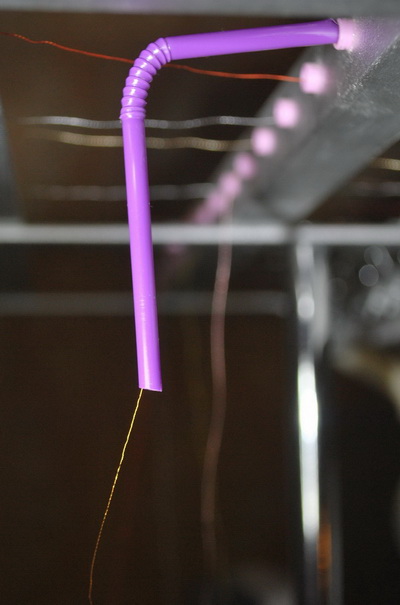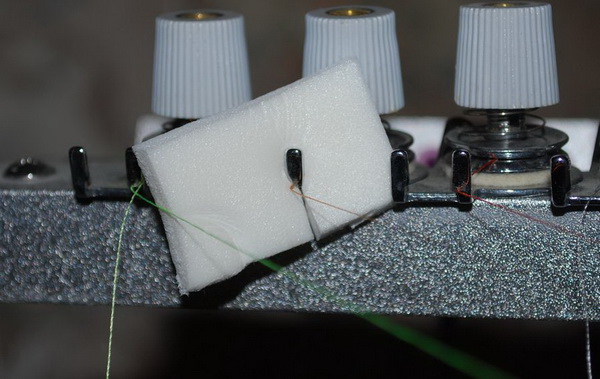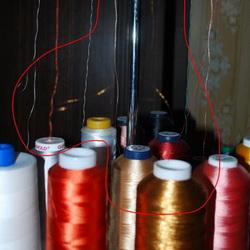Original text by: Marina Belova
Perhaps, everyone who had used a cheap metallic thread (made in China, Taiwan etc.) knows that they have one huge disadvantage — they are much more coarse, just like wire, that any thread made by the big brands. And because of their coarseness they often cause a 'small' problem leading to the thread breakage.
This is how the problem looks like in my case: the thread,coming off the spool — even before it comes into first hole in its path — forms a big loop that twists, becoming even more coarse. This loop is very flexible, because the thread constantly goes around the spool. And while making one of these rounds the loop begins to catch the threads from the neighboring spools that go upwards. This loop not only touches these neighboring threads, but intertwines with them and drags them along. Hence the thread breakage. I still don't have the thread nets that can straighten the loops up, therefore, I have to find my own key to this situation.
This is how the newly formed loop looks like:

I have lots of such cheap metallic threads; I bought them to see if they were quality enough and whether it was at all possible to use them in embroidery. An average price of a three-five thousand meters is not high — about 90-150 RUR. What is good in these threads beside their price that there is a vast array of colors. And despite such a nuisance as thread twisting, I embroider with them quite successfully, because they don't break often on my embroidery machine, therefore, it is possible for me to use them. The only thing that I don't like is the quality of the outer layer of the embroidery. But it is quite sufficient for experiments and test runs.
The most interesting thing is that all of the guiding holes, plates and discs in my machine, through which the thread goes on its way to the needle's eye, are not enough for straightening up all of the loops formed on the way. Even in the commercial embroidery machines they are not enough! And I was under the illusion that such problems only existed in home embroidery machines. Last summer I encountered a twisting problem there, and successfully solved it.
As for my commercial embroidery machine, I had to wreck my brains a few days ago, to find a way of preventing the appearance of the annoying loops. I've tried a whole bunch of options, but the most successful one on my machine was the use of supplementary materials described below.
I took an ordinary plastic straw that go with the cartons of juice for kids (I have plenty of them anyway):

Inserted it into the first hole in a thread path, shortening its way from the spool to this hole. It is only 17 or 18 cm long, but this is enough for a loop to appear:

This is how my guideway for metallic threads looks like now:
Further in the thread path I inserted a piece of a soft foam material, which I once tried to adapt for 3D embroidery. I placed it right after the first tension knob and ran the thread through in order for it to straighten out even the smallest loops:

As usual, it turned out that one should not cast off the tricky threads right away, because you can work with them, too. It just requires some additional effort sometimes.
Edited by Irina




There are no reviews to display.